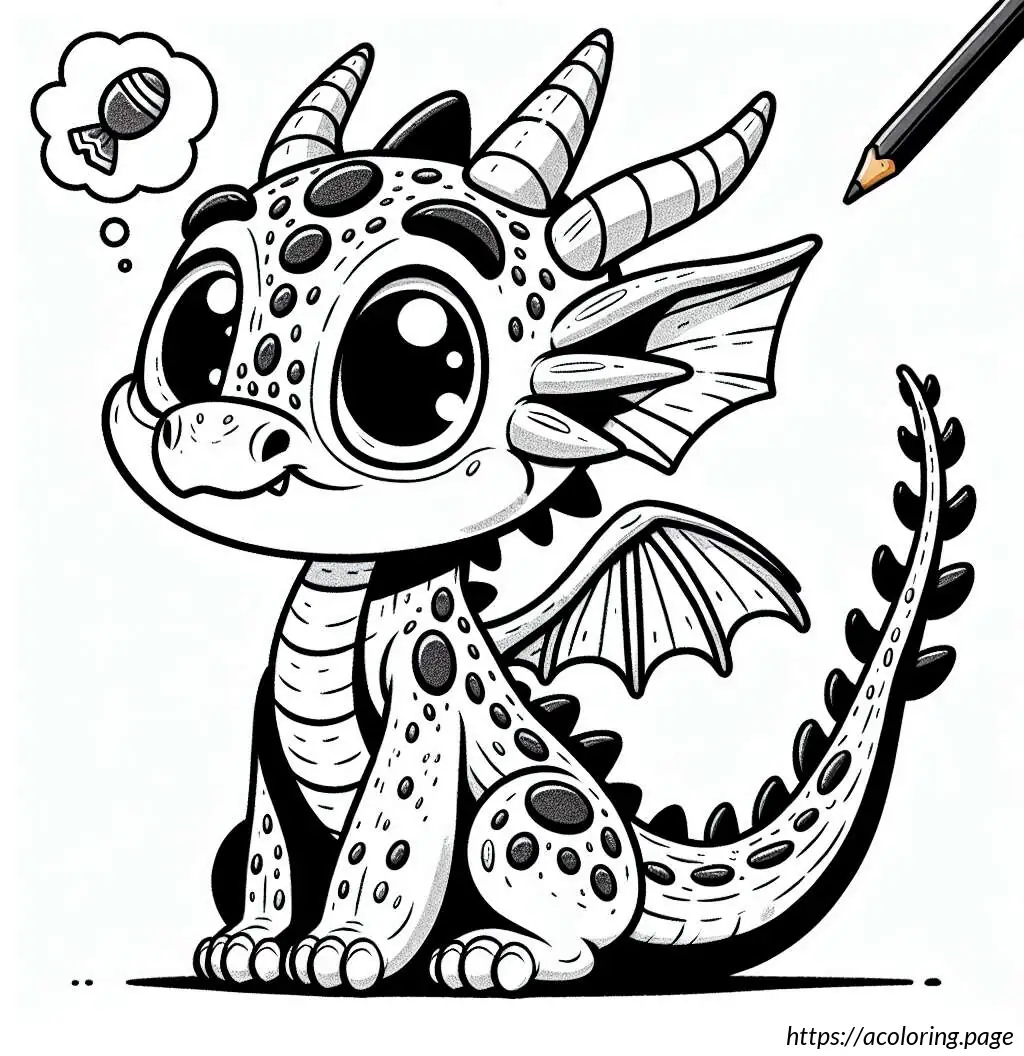

What is in this image? Be very specific. Scientific, Engineering style! No emotions, no opinions, no metaphors. Just the facts, as detailed as possible.
The image depicts a line drawing of a cartoon dragon. The dragon is shown in a seated position with its body oriented to the left side of the image. The dragon’s design includes several notable features1. **Head** The dragon’s head is turned upward, looking towards the upper right corner of the image. It features large, prominent eyes and a playful smile. The snout is rounded, and there are visible nostrils.2. **Ears and Horns** The dragon has pointed ears and two horns protruding from the top of its head. The horns curve slightly backward.3. **Body** The dragon’s body is elongated with visible segmentation, reminiscent of reptilian scales. These scales are represented as circular spots scattered across the dragon’s back.4. **Limbs** The dragon has four limbs. The front limbs are bent and positioned in front of the body, showing defined fingers. The rear limbs are stretched out to the side.5. **Tail** The tail extends from the rear of the body, curling upwards and featuring a pointed tip.6. **Wings** The dragon has a pair of wings attached to its back. The wings are partially open and have jagged edges, suggesting a bat-like structure.7. **Dream Bubble** Above the dragon, there is a thought or dream bubble, visually depicted as an ellipse with a trail of smaller ellipses connecting it to the dragon’s head. Inside the bubble is an image of a candy, specifically a wrapped piece showing twisted ends.The drawing is executed in black ink. The lines used are of uniform width, leading to a clear and simple illustration typical of coloring book designs. The image does not contain any color; it is presented in black and white. This style is often employed to solicit engagement through coloring activities. The depiction is fanciful and friendly, with no details that suggest naturalistic rendition, adhering to a cartoonish aesthetics appropriate for educational or recreational contexts for children.